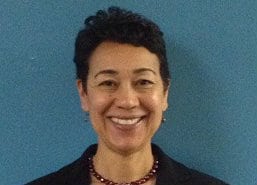We all want to feel like we belong. Whether it’s feeling like you’re part of a team or finding a group to sit with at lunch, it’s part of being human to want to be part of a community. So it’s no surprise that this desire is particularly strong for young adults who are in the midst of one of the first and potentially most daunting life transitions – becoming a college student.
In this vein, AYPF has been interviewing first generation college students over the past several months to get a better sense of their experiences. In discussing some of the greatest challenges students face when transitioning to college, some students mentioned financial concerns, while others spoke of their lack of preparedness academically, and others noted various family issues that affected their commitment and ability to be engaged with school. There was one common challenge, however, that was echoed by nearly every student – the lack of a sense of community. Those “what am I doing here?” and “do I belong?” types of questions are perhaps the most immediate (and scariest) obstacles many students face upon entering college.
This sentiment was particularly strong among community college students. Although the college experience is necessarily quite different at community colleges compared to universities, it’s safe to say that students in any environment experience the desire to belong. Because community colleges typically serve a high number of nontraditional students with work and family obligations, schools are often decentralized, and most students intend to transfer to other schools, many community colleges struggle to create environments in which students can feel connected to a community and engaged in the college life.
Research shows that factors related to a sense of community, such as engagement, involvement and confidence resulting from relationships with peers and faculty, have had a positive impact on student persistence at community college. These effects are particularly strong for students of color. As postsecondary completion and credential attainment for all students continues to become a priority in the U.S., it is critical that conversations be inclusive of the needs of community college students. (For context – nearly half of U.S. undergraduate students attend a community college, and only about one third of those obtain a degree or credential within six years.)
Although non-academic and non-financial factors have long been established as important contributors to student success at community college, many questions remain about how to best create these environments that foster students’ sense of belonging and increase the likelihood of persistence. Micro communities, or small groups or cohorts, are increasingly common and have been shown to be effective at encouraging retention in community colleges. They vary in structure, but most incorporate some combination of advising, peer mentoring, interaction with faculty, group activities on campus, and relationship building. Below are some examples of what these communities might look like:
- First-Year Experience Programs
These programs aim to create small communities of first year students to help connect them to other students, faculty, and staff and to provide academic, career, and social support. According to a study by the Center for Community College Student Engagement (CCCSE), “students who participate in first-year experience programs demonstrate more positive relationships with faculty, greater knowledge and use of campus resources, more involvement in campus activities, and better time-management skills than their non-participating peers.” The CUNY and NVCC systems have a range of well-regarded seminars and programs, and hundreds of other community college systems have or are beginning to implement such programs.
- Learning Communities
These communities can be similar to the cohorts mentioned above, but generally involve a series of two or more classes that small groups of students take together as a cohort. I was part of a learning community my first year in college. As I’ve mentioned before, it was instrumental in providing me with a sense of belonging and in helping me figure out how in the world I was supposed to “do” college. As an added bonus, this environment made it much easier to make friends. Research from CCCSE shows I’m not alone: “Learning communities build a sense of academic and social community and increase engagement among students and faculty, all of which lead to a variety of positive outcomes [including] improved academic achievement, credit accumulation, and self-reported learning.” Kingsborough Community College in Brooklyn, NY has one of the most effective learning communities to date. The program, which also includes enhanced counseling and tutoring, improved both short-term and long-term educational outcomes.
- Online Communities
Given the decentralized nature of community colleges and the increasing popularity of online or blended learning, an online community or network can potentially be just as helpful to students as in-person communities. Organizations such as I’m First create a virtual space for students who are going through the same experience to connect, share insights, and be a part of a network of incoming students, even if they attend different schools. As I’ve mentioned before, social media pages have been particularly effective at delivering information, engaging students, and perhaps most importantly, reducing social anxieties. After all, many incoming community college students may be new to the whole “college” experience, but they are almost certainly not new to social media. As a former college student who took a while to find her way, sometimes we just need something familiar to remind us that we belong.
Participation in these programs is certainly not a silver bullet solution to the dismal statistics I mentioned above. But when academic and financial support is offered alongside community building, perhaps it’s a step in the right direction for community colleges and their students.
I’ll close with a quote from a student we interviewed at Northern Virginia Community College, who put it much more simply than I can:
“My advice is to get more first year students together. We’re all going through the same thing, and if we’re together in a community we don’t have to feel like we’re working through it alone.”







